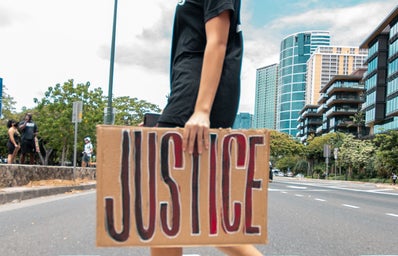Sometimes, striving and toiling day and night to get justice by traversing the red-tapism and pendency of Indian democracy, only to realize that these struggles were for nothing, will make you lose trust in the system itself. The recent developments in Indian democracy have shaken its legitimacy in the eyes of its citizens. Remission of the eleven convicts from the charges of rape and murder in the Bilkis Bano gang rape case and mass murder case 2002, with the Supreme Court Directive about the remission has even more neglected the dire strait the woman faced while she witnessed almost all of her family draining in blood, lifeless. Did the convicts deserve this mercy? While addressing this question, we should also pay heed to the circumstances and clauses that led to their remission. The premature release of the convicts on the 75th year of independence, wherein the stakeholders pledged the vow to protect women and empower them, is itself an irony.
Now, who is Bilkis Bano and what did she undergo on the night of the Godhra communal riots? Let’s dive straight into this. Bilkis Bano was 21 years old and five months pregnant when she was brutally gang raped and left naked by the rioters during the communal violence that followed the Godhra train-burning incident. On February 28, 2002, Bilkis with her 3 ½-year-old daughter Saleha and 15 other members of her family fled the countryside fearing attack and vandalism by the rioters. On the way to the village, a group of men wielding swords and sickles obstructed them. The fact that most of them were acquaintances was more traumatizing and unacceptable. Bilkis confessed the agony caused by the reminiscences of the people who brutalized her, who were people she knew since her childhood.
Having witnessed the mayhem around her and the brutal molestation and rape of 14 of her family members, the smashing of the head of her three-year-old baby and spontaneously killing her ruthlessly added insult to her injury. The pleadings and begging for mercy as she was five months pregnant didn’t stop them from tearing away her clothes and raping her. It was nothing less than a miracle that the assailant mistook her for dead and left her to rot among the other corpses. Upon regaining consciousness, she somehow reached the police station and was then eventually shifted to the relief camp where she reunited with her husband Yakub Rasool. Her undulating path for justice had paid her many prices, as the route was not easy to traverse. She had to face many travails to regain her fundamental rights, which were brutally scrapped by the authorities.
The identification of the bodies by two local photographers drew flak and the police were forced to act upon this. Bilkis was medically examined and her biological samples were sent to a pathology lab. No investigations were undertaken on the massacre and the corpses were left to rot. The irreparable witness and evidence tampering done by the police and the doctors left the scope of this case bleak. Later, it was found that the bodies were mercilessly buried in unmarked graves and salt was sprinkled upon them for the rapid decomposition of the bodies.
After an unbridled struggle for justice and abounding support poured by the activists stating the intricacies in pursuing the case in the state as there is a conspicuous favoring done to the perpetrators, the Supreme Court transferred the case to the Bombay High Court in 2004. Four years later in January 2008, a judge in Mumbai sentenced the 11 convicts to life imprisonment for the murder of 14 innocent people and the gang rape of Bilkis Bano, giving hope to many seeking justice and striving to sentence their perpetrators. This verdict accrued the legitimacy of the Indian Judicial System and boosted the trust of the people in judges that they won’t pine for partisanship or communal politics.
Following is the Supreme Court judgment of April 23, 2019: “The appellant was repeatedly gang-raped and was a mute and helpless witness to her three-and-a-half-year-old daughter being butchered to death. This factual position is undisputed and unchallenged in light of the findings of the trial court upheld by the High Court and this Court.…[she] is without any home and lives with her daughter who was born after the incident. She has been coerced to live a life of a nomad and as an orphan, and is barely sustaining herself on the charity of NGOs, having lost the company of her family members. The gruesome and horrific acts of violence have left an indelible imprint on her mind which will continue to torment and cripple her.” As a compensation for what she suffered, the decision also stipulated that she be given 50 lakhs as a ransom. The irony of it all is that after a little over three years of the above verdict, the Gujarat Government has bestowed mercy upon the convicts and freed them from all the changes citing the good behavior and transformation they have undergone.
The clauses referred for their remission is the 1992 Gujarat Govt remission policy. The vague loopholes in this clause were taken advantage of, as this policy did not specify the grave nature of offenses that cannot be considered for remission. The 2014 Gujarat Govt remission policy holistically elucidated the terms and conditions under which one can be remitted. Evading this policy and adopting the erstwhile policy scrapped by the same government that remitted them, justifying that the verdict of 2008 occurred before the 2014 policy is a lame explanation given to release the accused of such a gruesome offense. Bilkis Bano, who had come so far to imprison her wrongdoers befittingly, is now numb and helpless.
Is there a remission or going back for those who have done such a malicious act of murdering and raping 14 individuals? There can be different explanations for this complicated question. Some can cite their good behavior and demeanor in prison and some can deny the premature release of these murderers as they believe these convicts don’t deserve mercy or remission, but the memory of the macabre series of murders brutally engaged by the rioters is still haunting Bilkis after so many years and has only aggravated over the years.


